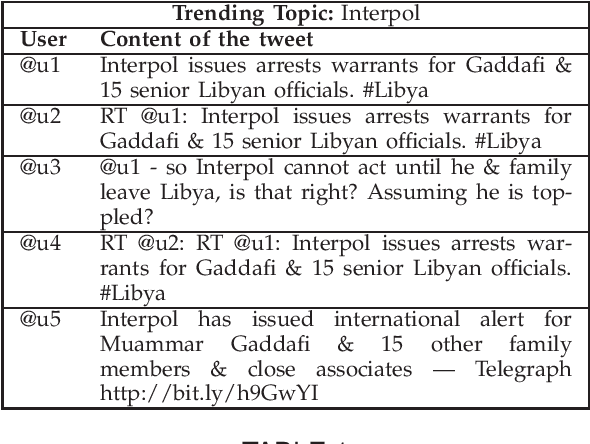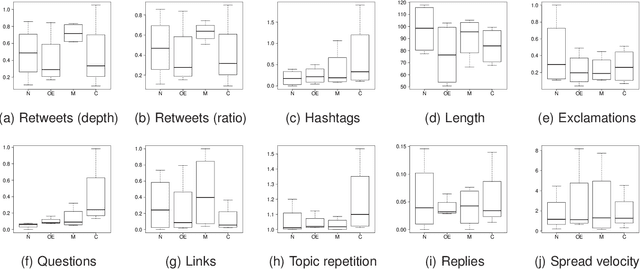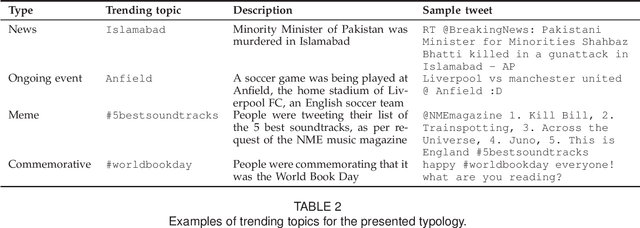Raquel Martínez
Using Fuzzy Logic to Leverage HTML Markup for Web Page Representation
Jun 14, 2016



Abstract:The selection of a suitable document representation approach plays a crucial role in the performance of a document clustering task. Being able to pick out representative words within a document can lead to substantial improvements in document clustering. In the case of web documents, the HTML markup that defines the layout of the content provides additional structural information that can be further exploited to identify representative words. In this paper we introduce a fuzzy term weighing approach that makes the most of the HTML structure for document clustering. We set forth and build on the hypothesis that a good representation can take advantage of how humans skim through documents to extract the most representative words. The authors of web pages make use of HTML tags to convey the most important message of a web page through page elements that attract the readers' attention, such as page titles or emphasized elements. We define a set of criteria to exploit the information provided by these page elements, and introduce a fuzzy combination of these criteria that we evaluate within the context of a web page clustering task. Our proposed approach, called Abstract Fuzzy Combination of Criteria (AFCC), can adapt to datasets whose features are distributed differently, achieving good results compared to other similar fuzzy logic based approaches and TF-IDF across different datasets.
Real-Time Classification of Twitter Trends
Mar 06, 2014



Abstract:Social media users give rise to social trends as they share about common interests, which can be triggered by different reasons. In this work, we explore the types of triggers that spark trends on Twitter, introducing a typology with following four types: 'news', 'ongoing events', 'memes', and 'commemoratives'. While previous research has analyzed trending topics in a long term, we look at the earliest tweets that produce a trend, with the aim of categorizing trends early on. This would allow to provide a filtered subset of trends to end users. We analyze and experiment with a set of straightforward language-independent features based on the social spread of trends to categorize them into the introduced typology. Our method provides an efficient way to accurately categorize trending topics without need of external data, enabling news organizations to discover breaking news in real-time, or to quickly identify viral memes that might enrich marketing decisions, among others. The analysis of social features also reveals patterns associated with each type of trend, such as tweets about ongoing events being shorter as many were likely sent from mobile devices, or memes having more retweets originating from a few trend-setters.
 Add to Chrome
Add to Chrome Add to Firefox
Add to Firefox Add to Edge
Add to Edge